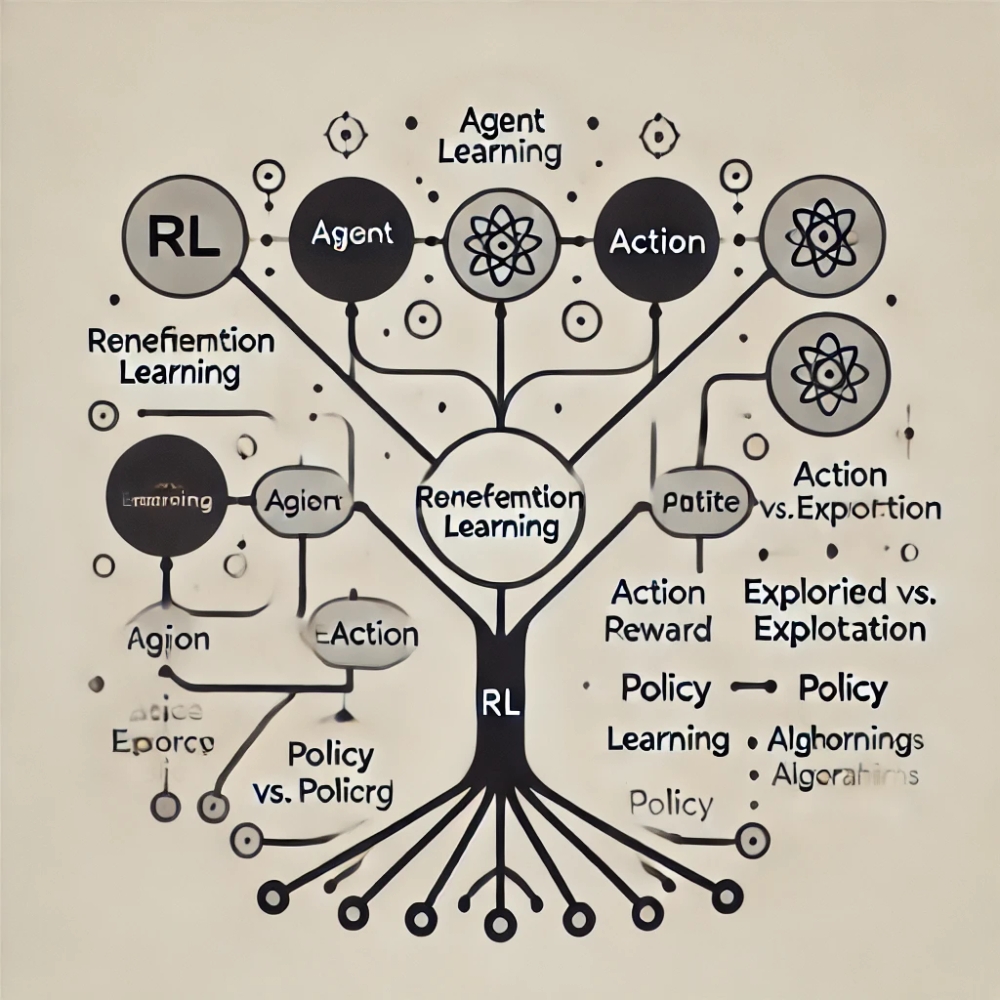Published
•4 min read
Reinforcement Learning: How Machines Learn Through Experience
Dive into the fascinating world of Reinforcement Learning (RL), where machines learn by interacting with their environment to solve real-world problems dynamically.

Reinforcement Learning: How Machines Learn Through Experience
Imagine teaching a robot to walk or a self-driving car to navigate chaotic traffic—not by programming every move, but by letting it learn through trial and error. This is the essence of Reinforcement Learning (RL): machines learning to make decisions, adapt, and improve over time by interacting with their environment. Intriguing, right?
Reinforcement Learning has revolutionized fields like robotics, gaming, and autonomous systems. From training robots to perform complex tasks to creating AI agents that dominate in games like Chess and Go, RL is shaping the future of AI in ways we never thought possible. Let’s explore what makes RL special, how it works, and its groundbreaking applications.
A Glimpse into the History of RL
The journey of Reinforcement Learning is rooted in both psychology and mathematics:
- 1950s: The foundation was laid with Richard Bellman’s Dynamic Programming and the Bellman Equation, key tools for planning and decision-making.
- 1980s: Breakthroughs like Temporal Difference Learning and Q-Learning made RL more practical.
- 2013 and Beyond: The marriage of RL and deep learning led to innovations like Deep Q-Networks (DQN), powering systems like AlphaGo that defeated human champions in Go.
RL has grown from a theoretical curiosity to one of the most impactful fields in AI.
Why Reinforcement Learning?
-
Dynamic Problem Solving
RL thrives in environments where conditions change constantly—think traffic systems, stock markets, or game-playing AI. It enables systems to adapt on the fly. -
Learning from Interaction
Unlike traditional machine learning, RL doesn’t need labeled data. Instead, it learns by interacting with the environment, receiving rewards (positive feedback) or penalties (negative feedback). -
Maximizing Long-Term Success
RL focuses on making decisions today to maximize rewards in the future, making it ideal for sequential decision-making tasks.
How RL Differs from Other Machine Learning Approaches
| Aspect | Supervised Learning | Reinforcement Learning |
|---|---|---|
| Goal | Learn from labeled data to predict outcomes. | Learn through interaction to maximize long-term rewards. |
| Feedback | Explicit (correct or incorrect labels). | Delayed (rewards or penalties). |
| Use Case | Image classification, spam detection. | Game-playing AI, robotics, self-driving cars. |
Core Concepts of RL
Let’s break RL into its essential components:
- Agent: The decision-maker (e.g., a robot or AI system).
- Environment: The world the agent interacts with (e.g., a game or traffic system).
- State (S): A snapshot of the environment (e.g., a robot’s position).
- Action (A): Choices available to the agent (e.g., move left or right).
- Reward (R): Feedback given after an action (e.g., points scored or penalties).
- Policy (π): The strategy the agent uses to decide actions.
How RL Works: The Learning Loop
- Observe: The agent observes its current state in the environment.
- Act: It takes an action based on its policy.
- Feedback: The environment gives a reward or penalty and transitions to a new state.
- Learn: The agent adjusts its policy to improve future rewards.
Think of it as training a dog: you give it a treat (reward) when it performs a trick correctly, encouraging it to repeat the behavior.
Applications of RL
1. Robotics
Robots learn tasks like walking, grasping objects, or navigating complex environments.
Example: Boston Dynamics robots that adapt to uneven terrain.
2. Gaming
AI agents master games by learning strategies over time.
Example: AlphaGo’s historic victory in Go, or AI dominating Dota 2 and Chess.
3. Autonomous Vehicles
Self-driving cars learn to navigate safely, avoiding obstacles and following traffic rules.
4. Healthcare
AI optimizes treatment schedules, balancing effectiveness and minimizing side effects.
5. Finance
RL powers trading bots to maximize long-term portfolio growth in volatile markets.
Challenges in RL
- Exploration vs. Exploitation: Finding the balance between trying new strategies and sticking to what works.
- Delayed Rewards: Some actions don’t show results immediately, making learning harder.
- Computational Costs: Training RL systems can be expensive and time-intensive.
The Future of RL
Reinforcement Learning is still evolving, with exciting possibilities ahead:
- Smarter and more adaptive robots.
- Energy-efficient systems that save resources and costs.
- Ethical applications in sensitive areas like healthcare and governance.
The potential of RL to revolutionize industries is immense, but so are the challenges. As research advances, RL will continue to push the boundaries of what machines can achieve.
Conclusion
Reinforcement Learning is not just about teaching machines to learn—it’s about creating systems that adapt, improve, and thrive in dynamic, unpredictable environments. From playing games to driving cars, RL has demonstrated its versatility and power. But the journey is far from over.
What’s next for RL? As it matures, it will reshape how we interact with AI and redefine the boundaries of what’s possible. Are you ready to dive into this exciting frontier?